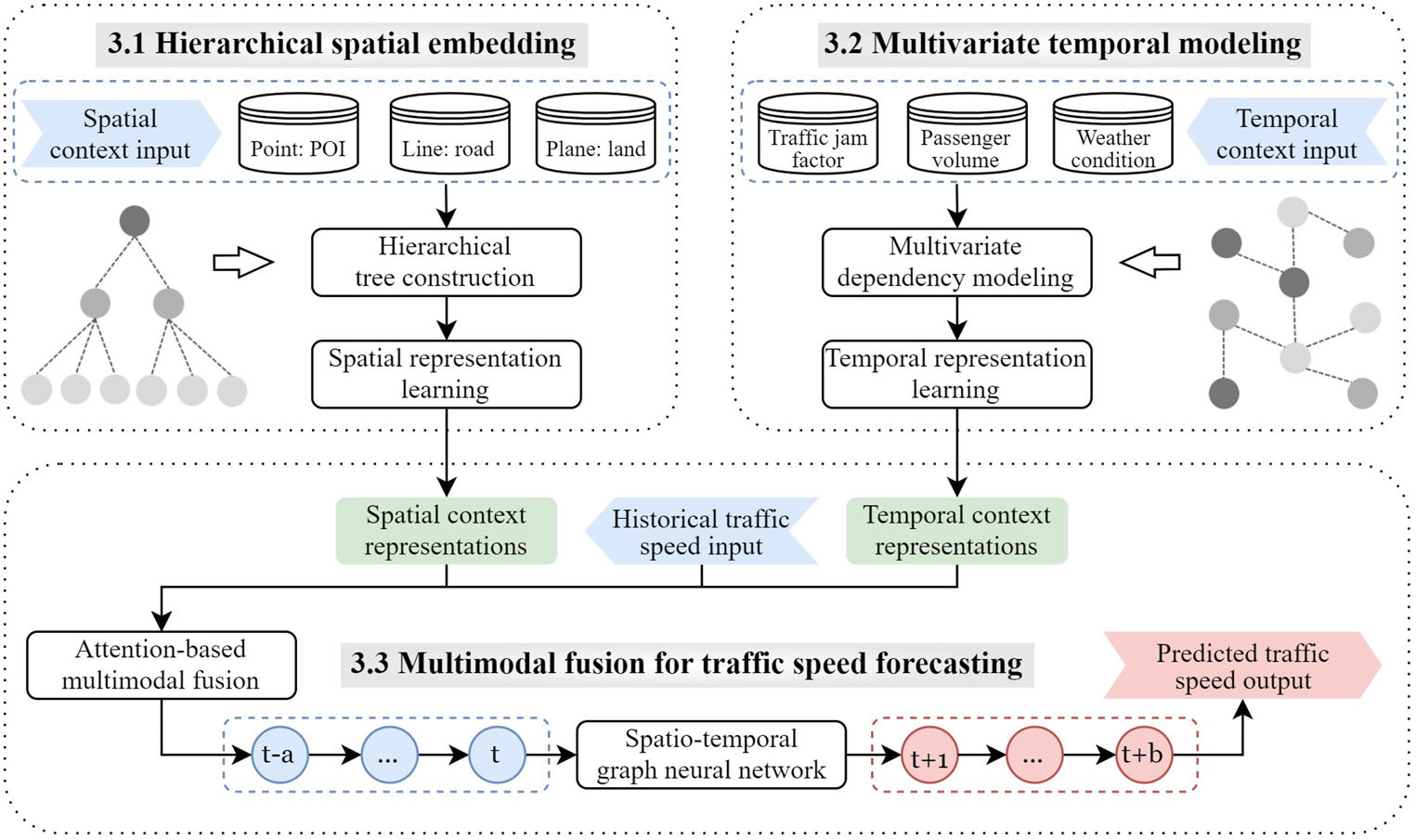Title: Incorporating multimodal context information into traffic speed forecasting through graph deep learning

Abstract
Accurate traffic speed forecasting is a prerequisite for anticipating future traffic status and increasing the resilience of intelligent transportation systems. However, most studies ignore the involvement of context information ubiquitously distributed over the urban environment to boost speed prediction. The diversity and complexity of context information also hinder incorporating it into traffic forecasting. Therefore, this study proposes a multimodal context-based graph convolutional neural network (MCGCN) model to fuse context data into traffic speed prediction, including spatial and temporal contexts. The proposed model comprises three modules, ie (a) hierarchical spatial embedding to learn spatial representations by organizing spatial contexts from different dimensions, (b) multivariate temporal modeling to learn temporal representations by capturing dependencies of multivariate temporal contexts and (c) attention-based multimodal fusion to integrate traffic speed with the spatial and temporal context representations for multi-step speed prediction. We conduct extensive experiments in Singapore. Compared to the baseline model (spatial-temporal graph convolutional network, STGCN), our results demonstrate the importance of multimodal contexts with the mean-absolute-error improvement of 0.29 km/h, 0.45 km/h and 0.89 km/h in 30-min, 60-min and 120-min speed prediction, respectively. We also explore how different contexts affect traffic speed forecasting, providing references for stakeholders to understand the relationship between context information and transportation systems.
Keywords
Traffic speed forecasting;
spatial context;
temporal context;
multimodal context fusion;
graph deep learning
Full Text Download
International Journal of Geographical Information Science
Q.E.D.









